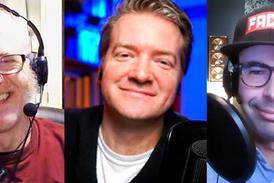Ken Miles, clinical academic and author of From Billiard Balls to Bishops: A Scientist’s Introduction to Christian Worship, explores whether we can feel the presence of God in an age of science
Experiences in which God is truly and critically a part are a fundamental aspect of worship and that worship should (hopefully) entail such encounters. If, like me, you are a Christian and a scientist, you might want to understand how that could work. Identifying processes that underlie the sense of God’s presence would be fascinating in its own right, but perhaps more importantly it would lend support to the view that religious experiences represent a genuine perception of God. But what does it mean to feel the presence of God in an age of science?
As theoretical physicist and theologian John Polkinghorne has pointed out, the scientific approach seeks to develop and evaluate an evidence base of experiences before attempting to formulate wider forms of understanding. We can find reports of encounters with God in antiquity. For example, in the Old Testament, Elijah experienced God as a “still small voice” (1 Kings 19:12, RSV) or in other translations “a sound of sheer silence” (NRSV) or “a low whisper” (ESV). In the New Testament, two disciples reflect on how their hearts had burned during an encounter with the risen Jesus on the road to Emmaus (Luke 24:32). These descriptions imply key roles for not only the brain but also a body control network known as the autonomic nervous system, which unconsciously regulates physiological processes such as heart rate, blood pressure and breathing.
Read more:
Will AI replace us?
How an inquisitive atheist found God through science
It is time to move on from Richard Dawkins
Has science disproved religion?
Religious experiences
More recently, scientific studies have recorded changes in the activity of the brain and autonomic nervous system during religious experiences. Examples include imaging research led by Uffe Schjoedt from Aarhus University, Denmark. The results showed that the activity in the frontal lobes of the brains of Christian volunteers was reduced when they felt a sense of God’s presence while receiving prayer.
Interestingly, Andrew Newberg and co-workers from the University of Pennsylvania have reported similar change in brain activity when subjects were speaking in tongues, a practice which St Paul considered to be a form of communication with God (1 Corinthians 14:15). In addition, Swiss researchers Yoshija Walter and Andreas Altorfer have showed that the heart rate and breathing of 60 volunteers increased when they experienced God’s presence during worship, especially when accompanied by music.
But how might God be involved in these processes? We need to identify a means by which the non-physical mind of God could interact with the physical brains and bodies of worshippers. (To envisage God’s interaction with the natural world as purely spiritual would preclude the possibility of divine action prior to the existence of spiritual beings.) The interaction should also entail God’s cooperation with natural processes, reflecting a divine nature that respects the inherent character of the things he has created.
One possibility lies in the strange domain of quantum mechanics, where it seems that the behaviour of an electron can be influenced by the mind. As shown by the famous double-slit experiment, an observer can choose whether an electron behaves as a wave or a particle simply by deciding whether to switch on a detector placed by one of the slits. Philosopher Nancey Murphy has proposed that the mind of God could determine the behaviour of electrons in a similar way, while avoiding any violation of the laws of nature.
Chaos theory
Although there is evidence to indicate that quantum effects occur within biological systems, the biological impact is extremely small. On their own, quantum effects are therefore unlikely to account for the changes in brain and body function associated with the experience of God’s presence. But if the quantum effects were amplified by a second process, they might produce a small but perceptible biological effect, consistent with the subtle sensation implied by the experience of a “still small voice”.
Many biological systems demonstrate a phenomenon known within chaos theory as the ‘butterfly effect’. The term refers to the way a small change in the initial conditions of certain systems can produce a considerably larger downstream effect. An often-cited example describes how the time of formation and path taken by a tornado can be influenced by a distant butterfly flapping its wings several weeks earlier. Likewise, we can propose that biological processes within the human brain and/or body can be influenced by God determining the position of an electron, especially since processes with chaotic properties have been demonstrated in both systems.
For this model for the sense of God’s presence to be creditable, it should throw new light on worship practices which, through trial and error, have developed over the centuries to help bring about such experiences. We should expect to find within these practices elements that enhance the changes in the brain and autonomic nervous system described above. And this is very much the case.
The postures and actions used during worship can increase the activation of the autonomic nervous system that is associated with the sense of God’s presence. Features such as columns and pillars, which create a sense of height within the worship space can add to these effects. It can also be shown that rituals and particular forms of words used during worship tend to inhibit analytical modes of thinking, which would otherwise activate the frontal lobes of the brain and so counteract the brain states associated with feeling God’s presence.
Get access to exclusive bonus content & updates: register & sign up to the Premier Unbelievable? newsletter!
Christian worship
Worship has traditionally been led by an ordained minister who is perceived to have special authority on account of having been uniquely and intrinsically transformed to represent Christ. The wearing of distinctive garments provides a visible sign of this special role. Alterations in the autonomic nervous system that can be triggered by certain worship actions are more intense and prolonged when the stimulus is a person one would follow carefully to learn something. Furthermore, the changes in brain activity associated with the sense of God’s presence have been shown to be greater when receiving prayer from someone perceived as having influential authority.
There are many reasons for believing that the sense of God’s presence is not merely an illusion. Very large numbers of people across multiple cultures and throughout history have reported having had such experiences. These encounters often have very significant effects on people’s lives and the communities in which they live.
Another reason for accepting that the sense of God’s presence represents a genuine experience of God is that the concept forms part of a network of related experiences and theories. The identification of a plausible mechanism for this experience that is compatible with science adds to the strength of this network.
Renowned atheist Richard Dawkins wrote that Darwin’s theory of natural selection made it possible for him to be an intellectually fulfilled atheist. By opening up the possibility of God interacting with the human brain and body without interrupting the laws of nature, quantum mechanics and chaos theory make it possible to be an intellectually fulfilled theist.
Ken Miles is a clinical academic and author of From Billiard Balls to Bishops: A Scientist’s Introduction to Christian Worship. His website can be accessed at www.science4worship.org.























